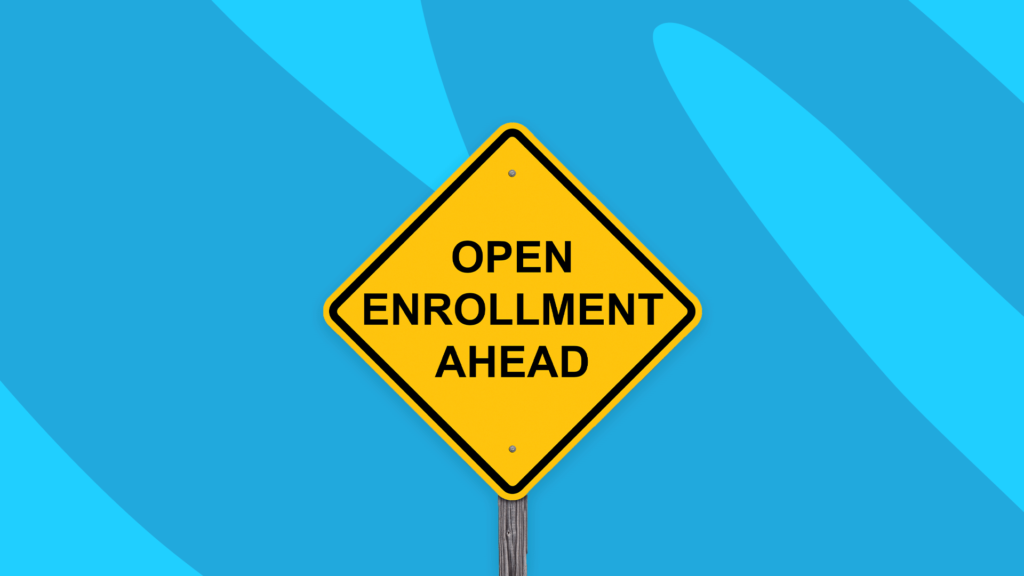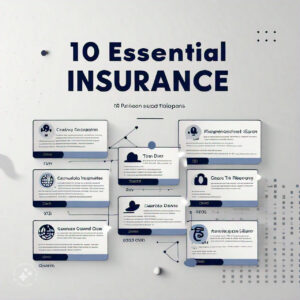The Medicare Annual Enrollment Period (AEP) for 2025 is a critical time for beneficiaries to review and adjust their Medicare coverage, running from October 15 to December 7, 2024. This period comes amid significant changes in healthcare policies, particularly concerning Medicare Part D, which have resulted in rising drug costs and a notable increase in high-cost beneficiaries. Noteworthy provisions from the Affordable Care Act (ACA) have facilitated greater access to prescription medications but have also raised concerns about the financial burden on vulnerable populations reliant on high-cost specialty drugs.[1] [2]
As part of broader efforts to improve health equity, the 2025 AEP will address disparities affecting underserved groups, including those receiving low-income subsidies or living with disabilities. Proposed changes emphasize the need for transparency and the assessment of utilization management policies through a health equity lens.[3]
These adjustments aim to ensure that all beneficiaries can navigate their options effectively during the enrollment period, thus promoting better health outcomes. The 2025 AEP will also introduce substantial reforms driven by the Inflation Reduction Act, including a hard cap on out-of-pocket expenses for prescription drugs under Part D, set at $2,000 annually. This policy change is expected to significantly alleviate the financial strain on beneficiaries requiring multiple medications, replacing the previous “donut hole” structure that left many with high out-of-pocket costs after reaching a certain threshold.[4] [5]
However, rising premiums for Medicare Part B and potential adjustments in Part D offerings may pose challenges as insurers adapt to the new regulations.[4]
Overall, the 2025 Medicare Annual Enrollment Period represents a pivotal moment for beneficiaries to make informed decisions about their healthcare coverage amidst evolving regulations and the ongoing quest for equitable access to medical services. It is crucial for individuals to actively compare available plans and consider their healthcare needs during this vital enrollment window.[6] [7]
Overview
The Medicare Annual Enrollment Period (AEP) for 2025 is set against a backdrop of evolving policies and trends in healthcare, particularly concerning the Medicare Part D program. Notably, there has been a significant increase in the proportion of high-cost beneficiaries and total drug spending within this program. This surge has been partly attributed to provisions in the Affordable Care Act (ACA) that include manufacturer discounts in the coverage gap, which have enabled beneficiaries to access more brand-name drugs and transition through the coverage gap more swiftly, leading to more individuals reaching the catastrophic coverage threshold sooner.[1] [2]
Research utilizing data from the Medicare Current Beneficiary Survey (MCBS) has demonstrated that the period following the implementation of the ACA (2011-2015) saw notable changes in prescription drug use and expenditure trends compared to the pre-ACA period (2008-2010)[1]
The analysis highlighted that the ACA’s adjustments to the out-of-pocket spending threshold further facilitated access to catastrophic coverage for beneficiaries, thereby enhancing their financial protection against high drug costs[1]
Moreover, the upcoming AEP will be influenced by proposed changes aimed at improving health equity within Medicare Advantage plans. These changes include ensuring that utilization management policies are analyzed from a health equity perspective, focusing on the impacts on underserved populations and those receiving low-income subsidies or living with disabilities[3]
The overarching goal of these initiatives is to enhance transparency and identify disparities in access to necessary services, thereby improving outcomes for all beneficiaries during the enrollment period. [3]
Enrollment Period Details
General Enrollment Period
The General Enrollment Period (GEP) for Medicare Part A and Part B runs annually from January 1 to March 31, 2025. Coverage begins on the first day of the month following enrollment, a change from prior policies that mandated a later start date of July 1 for those enrolling during the GEP.[4]
This period primarily serves individuals who did not enroll during their Initial Enrollment Period or who have to pay premiums for Medicare Part A and missed their initial signup opportunity. Those who do not enroll during this period may face a late enrollment penalty.[4]
Special Enrollment Periods
In addition to the GEP, Special Enrollment Periods (SEPs) allow for enrollment under specific circumstances. For instance, individuals affected by government-declared emergencies or disasters can qualify for an SEP that begins on the declaration date and ends six months after the declaration concludes.[5]
SEPs are particularly significant for those who miss their enrollment opportunity due to extenuating circumstances, as they offer a chance to enroll without incurring late penalties.[6]
Eligibility and Enrollment Guidelines
To be eligible for Medicare, individuals can sign up during their Initial Enrollment Period, the GEP, or during an SEP based on specific life events or circumstances. Individuals are generally encouraged to enroll during their Initial Enrollment Period unless they have adequate group health coverage from an employer. Late enrollment penalties can be applied to beneficiaries who delay signing up for Medicare, with additional costs imposed for delayed enrollment in Medicare Part B[6] [7]
For those who missed their Initial Enrollment Period, the GEP is a crucial opportunity to sign up for Medicare coverage. Under the updated policy effective January 1, 2023, coverage will begin the first day of the month following enrollment during the GEP, significantly reducing any gap in coverage that previously existed.[4] [6]
Types of Plans Available
Medicare offers a variety of plans designed to meet the diverse needs of beneficiaries.
Preferred Provider Organization (PPO) Plans
PPO plans are designed for beneficiaries who value flexibility in choosing healthcare providers. These plans allow members to see any doctor or specialist without a referral, though they may pay less if they use providers within the plan’s network. This model is appealing to those who prefer a wider range of healthcare options.
Health Maintenance Organization (HMO) Plans
HMO plans focus on affordability, requiring members to select a primary care physician (PCP) and obtain referrals to see specialists. While these plans generally have lower premiums and out-of-pocket costs, they also come with restrictions on provider networks, making them suitable for beneficiaries who prioritize cost savings over provider choice.
Special Needs Plans (SNPs)
Special Needs Plans cater specifically to individuals with unique healthcare needs, such as those dually eligible for Medicare and Medicaid, or those with chronic conditions. SNPs offer tailored benefits and services to support these populations, providing added assistance and resources to meet their specific healthcare requirements.
Plan Accessibility and Coverage
In 2025, Aetna is set to expand its Medicare Advantage offerings, providing plans in 44 states and Washington, D.C., and adding 76 new counties to increase access to 662,000 more Medicare-eligible beneficiaries. In total, Aetna will offer MAPD plans in 2,259 counties, serving approximately 59 million beneficiaries. Notably, around 83% of Medicare-eligible individuals in the U.S. will have access to a $0 monthly premium plan option, which can significantly reduce their healthcare costs.[8] [9]
Enrollment Considerations
Beneficiaries are encouraged to actively compare available plan options during the Medicare Open Enrollment Period, which occurs annually from October 15 to December 7. Changes in coverage, costs, and provider networks may occur each year, making it essential for individuals to review their existing plans and explore new options to ensure their healthcare needs are met effectively[10] [11]
Changes for 2025
Significant modifications to Medicare, particularly Medicare Advantage and Part D plans, are set to take effect on January 1, 2025, largely driven by the Inflation Reduction Act and subsequent regulations from the Centers for Medicare & Medicaid Services (CMS). [12] [13]
These changes are designed to improve affordability and access to prescription medications while stabilizing premiums for millions of beneficiaries.
Key Changes
Prescription Drug Costs
One of the most notable alterations is the introduction of a hard cap on out-of-pocket costs for prescription drugs under Part D, set at $2,000 per year. This new framework replaces the previous phases of the Medicare Part D benefit, including the elimination of the “donut hole,” which previously left beneficiaries with high out-of-pocket expenses after reaching a certain threshold. [14] [15]
The change is expected to significantly benefit those who require multiple medications, as it limits their annual spending.[14]
Premium Adjustments
Beneficiaries should anticipate changes in both Part B and standalone Part D premiums. While specific adjustments for 2025 are yet to be disclosed, it is projected that there will be an increase in Part B premiums, and changes may occur in the premiums of Part D plans as insurers adapt to the new out-of-pocket maximum [14]
Insurers are also adjusting their offerings in response to industry challenges, leading some to exit the Medicare Advantage market entirely [13]
Expanded Benefits
The updates include enhancements in access to behavioral health services, as CMS aims to improve network adequacy by including more types of behavioral health providers in Medicare Advantage plan networks. This initiative is part of a broader effort to promote mental health care accessibility and equity in coverage [16] [3]
Notification to Beneficiaries
Beneficiaries of Medicare Advantage plans can expect to receive a notification in mid-2025 regarding any unused benefits, which will further clarify the changes to their coverage and costs. [14]
Enrollment Process
Individuals have multiple opportunities to enroll in Medicare or make changes to their existing coverage, particularly during designated enrollment periods. Understanding these periods is crucial for beneficiaries to optimize their healthcare options and avoid late enrollment penalties.
Initial Enrollment Period
The Initial Enrollment Period is the first chance for individuals to enroll in Medicare when they become eligible. This period typically lasts for seven months, beginning three months before the individual turns 65 and extending three months after their birthday month. It is recommended that individuals enroll during this period unless they have group health coverage from an employer or are receiving insurance through the Marketplace or COBRA, as failing to do so may result in gaps in coverage and potential late enrollment penalties.[4] [5]
General Enrollment Period
The General Enrollment Period (GEP) occurs annually from January 1 to March 31. This period allows individuals who did not sign up for Medicare during their Initial Enrollment Period to enroll in Part A (if they have to pay a premium) and/or Part B. Coverage takes effect the first of the month following enrollment. It is important to note that the GEP is not a time for beneficiaries to change plans; rather, it is solely for those who missed earlier opportunities [4]
Annual Enrollment Period
The Annual Enrollment Period (AEP) takes place from October 15 to December 7 each year. During this time, beneficiaries can make various changes to their Medicare coverage, including switching from Original Medicare to a Medicare Advantage plan or vice versa. Beneficiaries may also compare and adjust their Part D prescription drug plans. Changes made during this period take effect on January 1 of the following year.[11]
Special Enrollment Periods
Special Enrollment Periods (SEPs) are available under certain circumstances, allowing individuals to enroll in Medicare or change their coverage without facing late enrollment penalties. These may be triggered by life events such as moving, losing other health coverage, or specific situations like being affected by a government-declared emergency or disaster. SEPs generally start on the date of the qualifying event and last for up to six months following the event’s conclusion. [5] [6]
. Additionally, the Consolidated Appropriations Act of 2021 allows for the creation of new SEPs for individuals experiencing exceptional conditions. This policy aims to minimize coverage gaps for those who missed enrollment opportunities due to unforeseen circumstances.[5]
Preparing for Enrollment
As the enrollment periods approach, beneficiaries are encouraged to prepare by gathering necessary documents, reviewing their current coverage, and understanding their options. Consulting with a licensed insurance agent can provide valuable guidance in selecting plans that best meet individual health needs.[17] [18]
By being proactive and informed, individuals can navigate the Medicare enrollment process more effectively and make choices that enhance their healthcare experience.
Challenges and Considerations
The 2025 Medicare Annual Enrollment Period presents several challenges and considerations for beneficiaries, particularly those who are dual-eligible for Medicare and Medicaid. One significant challenge is the tension between maintaining state flexibility in program administration and ensuring that integrated care arrangements are available uniformly across all states. [19]
This variability can affect how effectively care is coordinated for dual-eligible individuals, who often require complex health and social services due to their diverse needs.[19]
Another key issue is the ongoing impact of the Affordable Care Act (ACA) on high-cost beneficiaries. Despite improvements in financial protection and drug affordability, many high-cost beneficiaries—those with severe, complex, or life-threatening conditions—have experienced little change in their out-of-pocket costs or drug utilization trends.[1]
This suggests that while policy changes may benefit some, they do not adequately address the needs of the most vulnerable populations, who often rely on high-priced specialty drugs and can quickly exhaust coverage limits.[1]
Additionally, the management of overpayments by the Social Security Administration (SSA) remains a concern for beneficiaries navigating the system. Although recent policy changes will reduce the amount withheld from overpaid benefits, the process of repayment can still impose financial burdens on individuals already facing economic challenges. [2]
Beneficiaries are encouraged to stay informed about these processes and seek assistance to mitigate the impact of potential overpayments. As beneficiaries prepare for the upcoming enrollment period, it is crucial to conduct thorough reviews of their current Medicare plans. Changes in plan availability, premiums, and coverage aspects necessitate careful consideration to ensure beneficiaries choose plans that align with their needs. Experts recommend that individuals, particularly those with complex medication needs, actively compare their options during the enrollment window, as doing so could reveal plans that better suit their circumstances.[20] [21] [10]
The complexity of Medicare options, along with changes in coverage and costs, underscores the importance of informed decision-making during this critical time. [20] [22]
Resources and Support
Overview of Available Resources
During the Medicare Annual Enrollment Period (AEP) for 2025, various resources are available to assist both agents and beneficiaries in navigating the complexities of Medicare plans, particularly for those who are dually eligible. Organizations such as TAIA provide dedicated support to agents, ensuring they remain informed about changes in the Medicare landscape and offering tools to help clients make educated decisions regarding their coverage options.[23]
Tools for Agents
TAIA emphasizes the importance of reviewing the plans in which dually eligible clients are currently enrolled. Agents are encouraged to proactively engage with clients in non-integrated plans, particularly as new regulations may impact their coverage starting in the fall.[23]
The organization provides an A3 platform that allows agents to easily export lists of their Dual Eligible Special Needs Plan (DSNP) clients, facilitating more effective outreach and support. [23]
Social Security Online Services
To enhance the customer experience for beneficiaries, Social Security has implemented initiatives to streamline access to services. New my Social Security account holders can opt for online-only communications, aligning with federal efforts to improve service delivery and equity.[2]
Beneficiaries are encouraged to utilize these online services to manage their accounts and gain access to essential information.[2]
Behavioral Health and Community Resources
For beneficiaries requiring behavioral health care or assistance with social determinants of health, programs such as CVS Health Resources For Living® provide vital support. This program connects members with community resources for needs such as transportation, housing, and caregiver support, addressing barriers to health and well-being.[8]
Contact Information for Support
Agents and beneficiaries can reach out for assistance and further information. TAIA agents can email agents@taia.us for resources related to benefits for DSNP clients.[23]
Similarly, Medicare beneficiaries are encouraged to contact customer service for inquiries about their plans, ensuring they have the necessary information to make informed decisions during the AEP.[13]
By leveraging these resources and support systems, both agents and beneficiaries can better navigate the evolving Medicare landscape in 2025.
Frequently Asked Questions
What is the Medicare Annual Enrollment Period (AEP)?
The Medicare Annual Enrollment Period (AEP) occurs each year from October 15 to December 7. During this time, beneficiaries can make changes to their Medicare coverage, including switching between Medicare Advantage and Original Medicare, adding or dropping Part D prescription drug coverage, and altering their plans based on health care needs and preferences. [2] [3]
How can I make changes during the AEP?
Beneficiaries can review their options by comparing different Medicare plans available in their area. It is advisable to carefully examine the Annual Notice of Changes (ANOC) letter that recipients receive in September, which outlines changes in coverage, costs, and provider networks for the upcoming year.[3] [14]
Utilizing tools provided by Medicare, such as the Plan Finder, can aid in making informed decisions.[19]
What factors should I consider when selecting a plan?
When selecting a Medicare plan during the AEP, consider factors such as monthly premiums, out-of-pocket costs, coverage for prescription medications, the network of providers, and any additional benefits that may be important for your health needs. [19] [24]
It is crucial to assess if your current medications are covered under the plan’s formulary and if your preferred healthcare providers are in-network.
What are Dual-Eligible Special Needs Plans (D-SNPs)?
D-SNPs are specialized Medicare Advantage plans designed for individuals eligible for both Medicare and Medicaid. These plans aim to provide integrated care but can vary significantly in the level of integration offered. Strengthening integration requirements for D-SNPs has been recommended to improve care quality and reduce costs for dual-eligible individuals. [2] [19]
How can I avoid common scams during the enrollment period?
To avoid scams related to Medicare enrollment, beneficiaries should be cautious of unsolicited calls or messages requesting personal information or payment. Social Security will never demand immediate payment or ask for personal information such as Social Security numbers over the phone. It is essential to report any suspicious communications to the appropriate authorities. [2]







